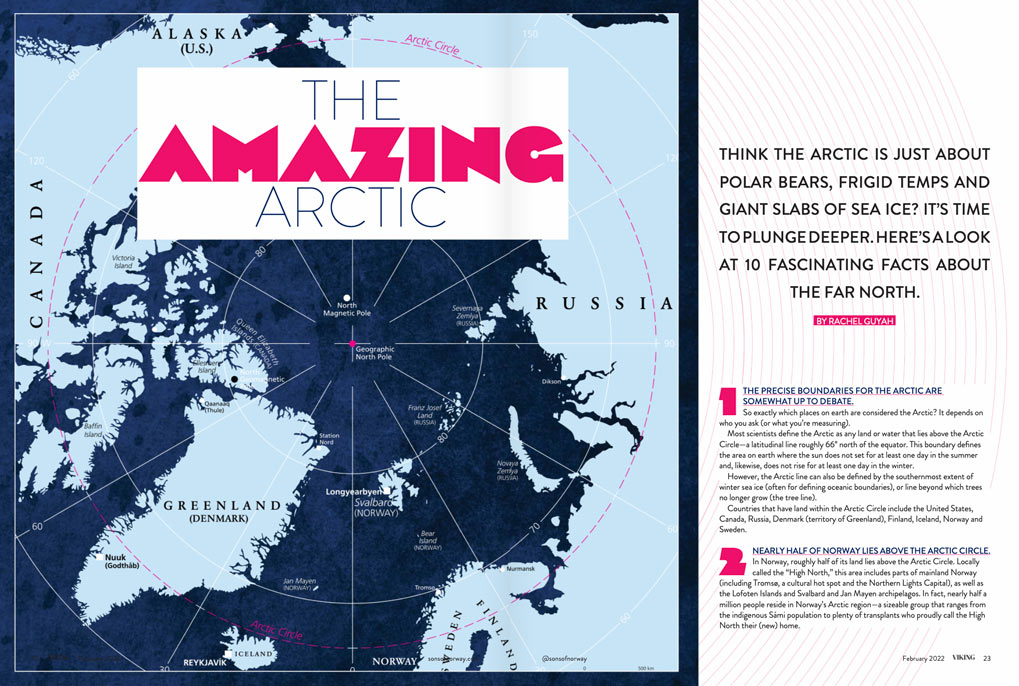By Sofia Haan
How much do you know about the world’s northernmost region? In the February 2022 issue of Viking, we highlight fascinating facts about the Arctic. Grab your parka and mittens—it’s time for another icy adventure! Here are five more reasons the Arctic is so unique.

1. The Norwegian Arctic is home to the northernmost city in the world.
Found on Finnmark’s coastline, Hammerfest, Norway is the northernmost city in the world. Due to its extreme northern location and subarctic climate, the city experiences the midnight sun throughout the summer and polar nights and heavy snowfall during the winter. Hammerfest is home to 10,000 people and attracts tourists yearly to enjoy its hiking, fishing and sightseeing.
2. The Arctic is home to more than just snow.
Even with a very short growing season, many plants grow and thrive in the Arctic. Spring growth often begins when there is still snow and frost on the ground, but the flowers bloom on the tundra for a short time in July. Species vary depending on specific Arctic regions, but some include blue-spiked lupine, wild crocus, mountain avens, Arctic poppy and saxifrage.
3. It’s the land of darkness and lightness.
The seasons look a little bit different in the Arctic, where darkness or daylight can last all day. The sun rises in the Arctic around the Spring Equinox. The brightest day of the year occurs on the Summer Solstice. Called the Midnight Sun, the area stays in full sunlight until the Autumn Equinox. In the winter, the Arctic stays in complete and total darkness, also known as the Polar Night.
4. The Arctic is home to multiple UNESCO World Heritage sites.
If you’re hoping to travel to the Arctic someday, add these UNESCO World Heritage sites to your bucket list! There are currently five Arctic heritage sites throughout Greenland, Norway, Iceland and Russia. These sites are known for their unique attractions, wildlife, and historical significance. At Alta, visitors can see a collection of petroglyphs in the Alta Fjord depicting the activities of prehistoric Far North humans circa 4200 to 500 B.C.
5. Reindeer, polar bear and fish are traditional “country meals” in the Arctic.
Meals in the Arctic might look a little different than what’s on your dinner table. Because of the expense of shipping food to grocery stories in the Far North, many local groups turn to “country meals” for their food.
